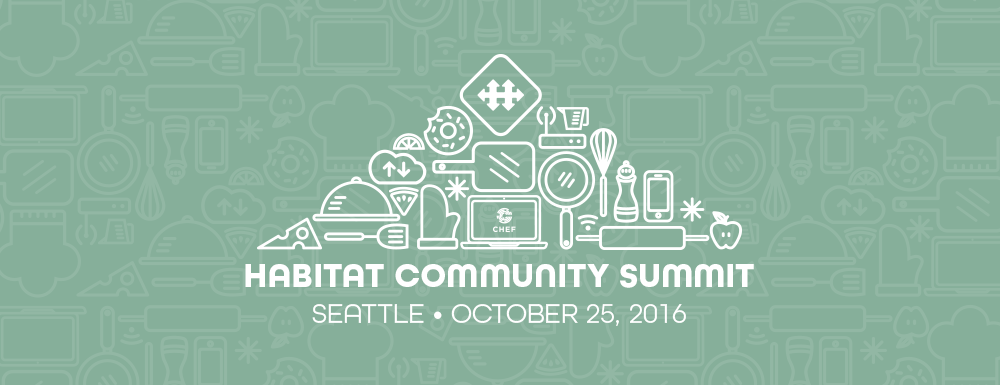The inaugural year of any freshly-minted FOSS community is full of new experiences. For the Habitat community, it’s no different: it’s certainly been a year of firsts.
The Habitat Community Summit 2016 was a truly awesome and inspiring experience. The turn out and level of participation was absolutely fantastic for a first time event.
For those of you that couldn’t make it, here’s a quick recap: In just 6 hours’ time, we discussed everything from building and managing a local depot with private packages, to current service topologies, Habitat pain points, and everything in between! For the full list of the Open Spaces topics and their respective ethernote pages, take a look at our master list!
A Community With .hart
Something that really stood out to me about this event was the respect and openness I witnessed in every Open Spaces session I visited. People of every background, knowledge level, and personality type were engaging in open and honest dialogue. Each person was listening and being heard, even when dealing with difficult topics. In fact, I know of at least one session that was all about bubbling up the current pain points in the project and offering possible workarounds and long term fixes. To me, this is what a community event like the Summit is all about!
The level of kindness, passion, and respect was exceptional. A community grounded in those principles is exactly what we want to be cultivating around Habitat. We are definitely setting off on the right foot; if this first Summit was any indication of the future of our community, then things are looking very bright.
Where We’re From, Where We’re Going
One of the great things about being a part of a very young FOSS project is the flexibility and fluidity in the project’s future. Habitat has been public for a little over four months now and has been a codebase for barely a year. While code that’s a year old can certainly contain technical debt, it benefits from not being bogged down by the compound problems that can occur after years and years of growth and development. What’s more, our core contributors are all engineers with extensive FOSS backgrounds. This has certainly helped to inform our direction and belief in what we’re building together.
The point is: We’ve come a long way in a short time, but we have a long and exciting road ahead of us. In the coming months, Habitat is going to grow – a lot. We want you to be a part of that: not just as end-users but as core contributors.
That being said, in the coming weeks we’ll be creating some fresh ways for you to get involved in both the practitioner and developer spaces. So, Stay tuned!
Get Involved
Ready to get involved right away? Here are some ideas to get you started!

